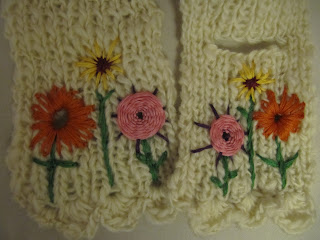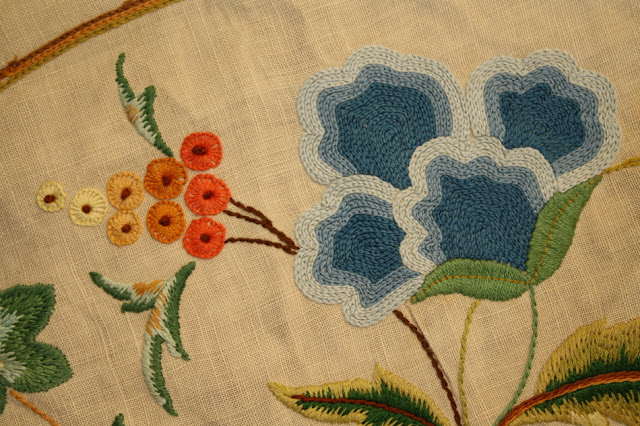From the beautiful 'Geranium' pink to this week's thread colour, 'Parma Violet'. A colour with a long history with a flower back to the 1500's, and an association with one of the most powerful men in the history of Europe and the two women he loved. If you Google Parma violet, you will be referred to; the famous violet flower, oil and acrylic paint colours, cupcakes, nail varnish, eye shadow and perfume. This is a colour, that evokes the feminine, a colour that is still loved today. But purple is not the most popular colour when it comes to clothing, and one that you either seem to love or hate.
 |
| Photo Courtesy of M.Pierre Barandou, Geraniums d' Aquitaine, S.A., Agen, France |
Parma is a city in the Emilia-Romagna region of northern Italy, built before the time of the Roman Empire. Parma is known for its architecture, University and picturesque countryside. It is also famous for its association with a flower the Parma violet known as a breed since 16th century, and cultivated in Grasse in the South of France, since 1868.
 |
| Empress Marie-Louise and the King of Rome, by Joseph Franque, 1812. |
Napoleon Bonaparte's, second wife Marie-Louise was the first one who distilled violet and made her personal and very own perfume. When Marie-Louise was parted from Napoleon by his deportation to Elba, she lived in Parma as the Duchess of Parma, Piacenza and Guastalla. Upon her arrival in Parma, Marie-Louise personally controlled the selection of the Parma violet in the Botanical garden. Light violet, the colour of the flower, became her own favourite colour. Along with the nuns from the Annunciata monastery she produced the essence from the flowers and the leaves of the violet, and succeeded in distilling a perfume that became her personal fragrance, its formula kept secret by the monks.
 |
| Napoleon Bonaparte (1769-1821) in His Study at the Tuileries, 1812, by Jacques-Louis David |
The delicate violet also seduced Napoleon who took it as his own flower.
 |
| 1808 Empress Josephine by Jean-Baptiste Isabey, from the Wallace Collection, London |
After his death a few violets picked from his beloved wife Josephine de Beauharnais' grave were found in his neck medallion. I love this painting of Josephine, look at that wonderful ruff. Ahhh ruff's it has been so long since I have made one. After this post I am going to lose myself in making one.
So what more could you want than that, love and power, hmmmm chocolate, Champagne, diamonds ........
But how can we now translate this to a dress, and to be even more defined than that, a dress that could have been made and worn in Tauranga. Well the answer is delightfully simple, a dress in the same colour from a pattern from the collection in the Brain Watkins House.
 |
| Image courtesy of the Tauranga Historical Society |
How does this dress, from a Maudella pattern qualify, apart from the fact that it is shown on the pattern cover made in the same purple shade as the thread?
 |
| Image courtesy of the Tauranga Historical Society |
Don't you love the green shoes? But I digress, what seals the deal for me, is the fact that the model is holding a bunch of violets to her nose, and breathing in their evocative fragrance. And of course it is spunky little dress don't you think, I love the little kick pleat at the back, fitted skirt and the belt tailor-made in the same fabric as the dress.




















































